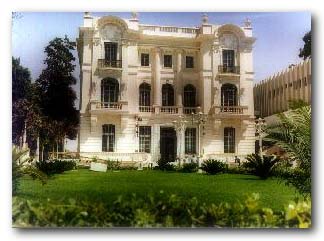![]()
Karnak
![]()
 |
 |
The Temple of Karnak is actually
three main temples, smaller enclosed temples, and several outer
temples. This vast complex was built and enlarged over a thirteen
hundred year period. The three main temples of Mut, Monthu and
Amun are enclosed by enormous brick walls. The Open Air Museum is
located to the north of the first courtyard, across from the
Sacred Lake. The main complex, The Temple of Amun, is situated in
the center of the entire complex. The Temple of Monthu is to the
north of the Temple of Amun, while the Temple of Mut is to the
south. The Second Pylon of Karnak was built by Ramesses II. The
Ptolemies did some extensive repairing and some new building on
the center section. Curiously enough, they left the columns and
the facade of the First Pylon unfinished and left the mud-brick
ramp where it was at. The reason for the work left unfinished is
not clear.
The Hypostyle Hall is found after passing through the Second
Pylon. The hall is considered to be one of the world's greatest
architectural masterpieces. Construction began during Ramesses
I's reign. He was the king who founded the Nineteenth Dynasty and
was king for only one year. The work continued under Seti I (1306
- 1290 BC). Seti I also built the Templee of Abydos and many other
temples. The hall was completed by Seti's son, Ramesses II. The
effects that are produced inside the hall are much different than
they were originally. The huge architraves are not above the
capitals that tower above. Towards to center of the hall several
architraves and windows that have stone latticework still remain.
This small area can give you an idea of the builders' intent for
the lighting effects. Some imagination is required here to
appreciate what it must have looked like. The walls, ceilings and
columns are painted with the natural earth tones. The light that
was allowed in originally kept most of the hall in shadows. The
hall ceiling was 82 feet high and was supported by 12 papyrus
columns. The columns are made of sandstone and set in two rows of
six. Each row is flanked on either side by 7 rows of columns that
are 42 feet (12.8m) high. Each row has 9 columns, however the
inner rows have 7 columns. The reliefs throughout the hall
contain symbolism of Creation. The reliefs in the northern half
are from the time period of Seti I and are obviously better done
than those done by his son Ramesses II, which are in the southern
half. Ramesses II's reliefs are cut much deeper than those of
Seti's. This gives a much more dramatic light and shadow effect.
The outer walls of the Hypostyle Hall are covered with scenes of
battle. Again, Seti I is to the north and Ramesses II is to the
south. The scenes have long since lost their color that was
painted and the outlines of the scenes have been blurred by the
centuries of wind and sun. It is unsure whether the scenes of
battle are based on historical fact or of ritual significance. It
is thought that when the battle details are very precise, real
events are most likely involved. Seti's battles take place in
Lebanon, southern Palestine and Syria. The southern walls of
Ramesses II have hieroglyphic texts which actually record details
of the Hittite king and Ramesses II signing a peace treaty in the
twenty-first year of Ramesses reign. This is the first evidence
found for a formal diplomatic agreement and is certainly
historical. Why this was done is not known.
![]()